

News
SpaceX Crew Dragon capsule christened ahead of operational astronaut launch debut
The long-standing tradition of astronauts naming the spacecraft that transports them safely to and from space continues ahead of SpaceX’s next crewed flight to the International Space Station (ISS).
Shortly after safely arriving in low Earth orbit during SpaceX’s Crew Dragon Demo-2 mission to the ISS under NASA’s Commercial Crew Program, NASA astronauts Bob Behnken and Doug Hurley revealed “Endeavour” to be the chosen name of their SpaceX Crew Dragon capsule. Prior to being named by its crew, the capsule had only been referred to by its internal build number, C206. The next Crew Dragon Capsule to visit the ISS, the Crew-1 mission C207 capsule, has been given the same treatment. Until now.
On Tuesday, September 29, during a full day of Crew-1 pre-mission media briefings, NASA astronaut and Commander of the Crew-1 mission, Mike Hopkins, revealed that “the Crew-1 Dragon capsule number 207 will henceforth be known by the call sign: Resilience.”
Hopkins explained that “I think all of us can agree that 2020 has been a challenging year; global pandemic, economic hardship, civil unrest, isolation. The name Resilience is really an honor of the SpaceX and the NASA teams.” He went on further to explain that the name was also chosen as a nod to all of those that have endured the difficulties, but continued to support the mission, “our families, our colleagues, our fellow citizens, our international partners, our leaders that have all showed those same characteristics through these difficult times.”
What’s in a name?
The naming of crewed spacecraft is a tradition that extends all the way back to NASA’s Mercury program. Alan Shepard, the first American in space in 1961, designated his spacecraft “Freedom 7” before its debut flight.
More notable names arose during NASA’s Apollo era of lunar exploration. With two spacecraft required for the missions to the Moon – a command module and a lunar lander – monikers were needed to distinguish between the two vehicles during radio communication. “Charlie Brown” and “Snoopy” were chosen for the spacecraft of the Apollo 10 mission. The characters of Charles Schultz’s “Peanuts” have since become synonymous with NASA.
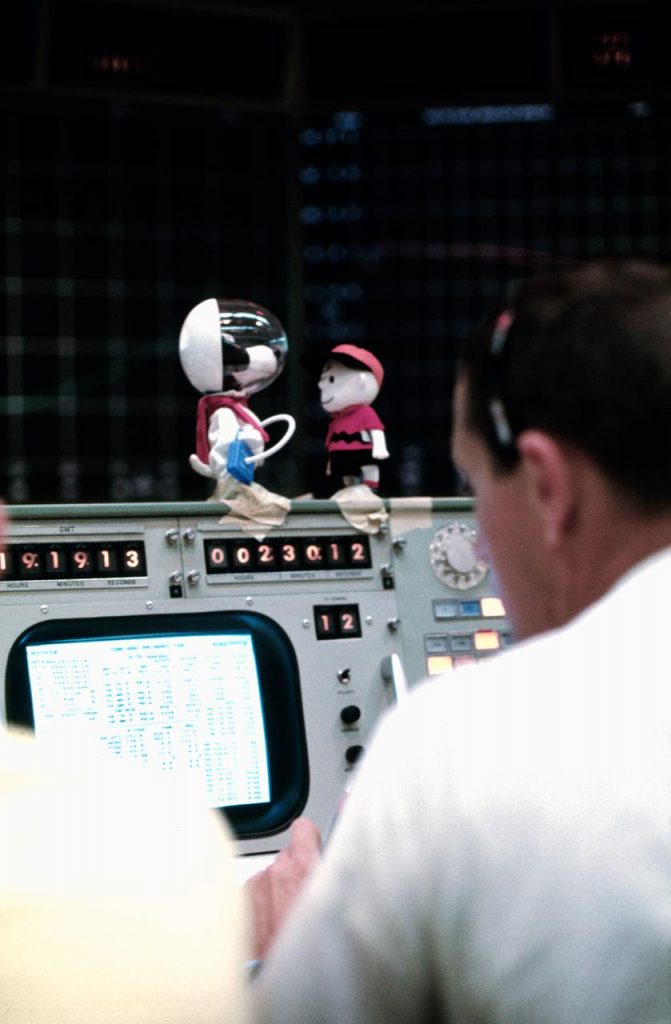
In observance of the 50th anniversary of Apollo 10, an inflatable Snoopy balloon dressed in an orange astronaut suit premiered during the 2019 Macy’s Thanksgiving Day Parade in New York. It was a reoccurrence of the astronaut Snoopy balloon that originally debuted in 1969 celebrating Neil Armstrong and Buzz Aldrin’s famous walk on the Moon during NASA’s Apollo 11 mission.
New era of spaceflight, same traditions
Hurley and Behnken designated “Endeavour” for their dragonship as a way of honoring those before them. Both Behnken and Hurley both flew to the ISS for the first time as NASA astronauts on NASA’s space shuttle Endeavour.
After the tragic loss NASA’s space shuttle “Challenger” in 1986, NASA returned to flight with the newly christened space shuttle “Endeavour” in 1992. The name was chosen to fit in-family with the other space shuttle names designated after famous historical ships that set sail to explore the great unknown. Endeavour was named after a British Royal Navy research vessel designated for the lands of Australia and New Zealand in 1768.
The command module of Apollo 15 also shares the name. Commander David Scott once explained that the named “Endeavour” was chosen to recognize the heavy scientific emphasis of the Apollo 15 mission mirroring that of the British Royal Navy research vessel of the same name.
It seemed only fitting that the first crewed vehicle to return humans to the ISS from American soil after an absence of nine years receive the honorary name “Endeavour” as well.
Although the tradition of naming the spacecraft remains, the inspiration for those names has shifted. Dragonship “Resilience” is not the only spacecraft to launch from Earth in 2020 with a name defined by a characteristic. NASA’s Perseverance Mars rover launched earlier this year on its way to the Red Planet.
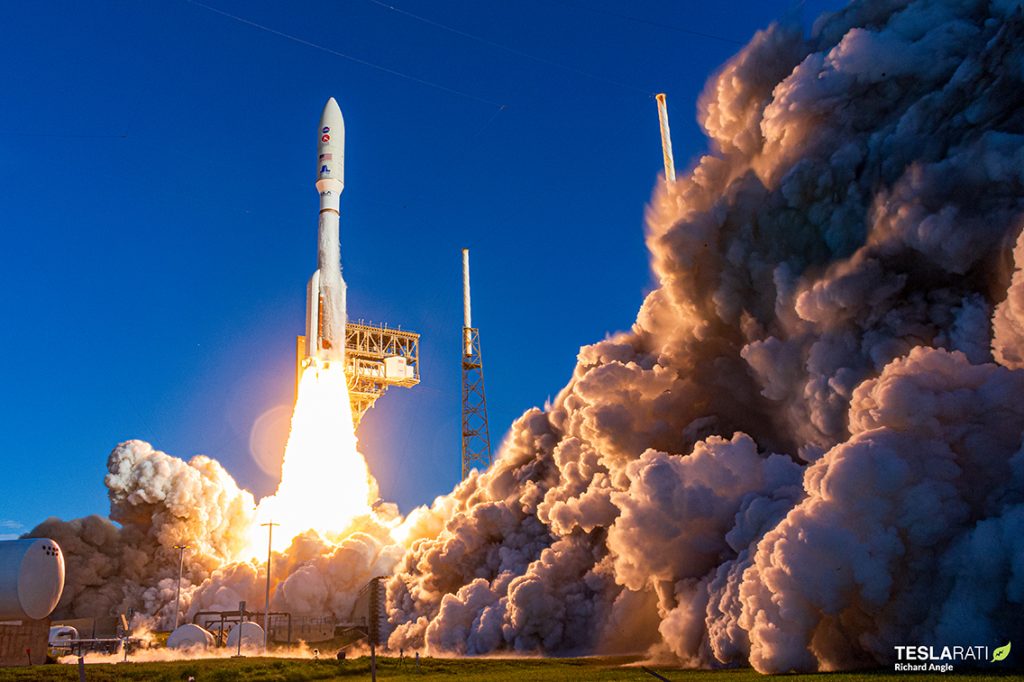
The name option of Perseverance was submitted, along with 28,000 other essay submissions, to be voted on by the general population. Perseverance was chosen by seventh-grader Alexander Mather. He believed the name fit in-family with the other Mars rovers currently occupying the Red Planet and that it was one of the most important characteristics missing from the line up of other inspirational names such as Sojourner, Spirit, Opportunity, and InSight.
When Mather submitted the name, he believed it to represent a quality possessed by humans. Throughout the year 2020, the definition of the name evolved to represent the wilfulness of human nature to endure and overcome the tumultuous year of 2020. As Mather explained “we, not as a nation, but as humans will not give up. The human race will always persevere into the future.”
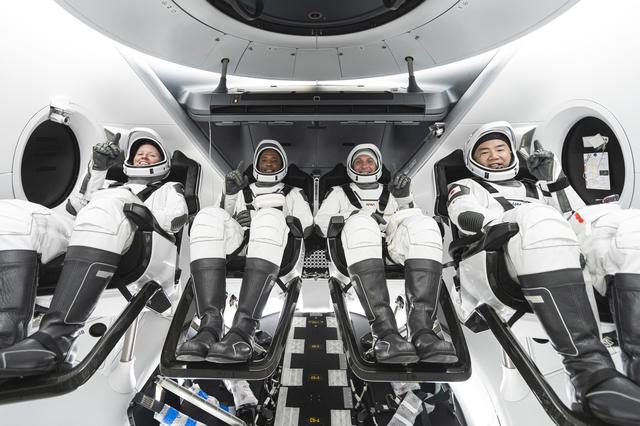
Dragonship “Resilience” is sure to inspire just as many as its many predecessors. “Resilience” will be the very first spacecraft to complete an operational crewed mission to the ISS for NASA’s Commerical Crew Program. It will carry NASA astronauts Mike Hopkins, Victor Glover, and Shannon Walker along with Japan Aerospace Exploration astronaut Sôichi Noguchi to the ISS. Barring any further delays, the Crew-1 “Resilience” Dragon capsule is slated to blast off atop of a SpaceX Falcon 9 at 2:40 am (0640 UTC) from LC-39A at Kennedy Space Center, FL on October 31, 2020.
Check out Teslarati’s Marketplace! We offer Tesla accessories, including for the Tesla Cybertruck and Tesla Model 3.
Elon Musk
Tesla reveals it is using AI to make factories more sustainable: here’s how
Tesla is using AI in its Gigafactory Nevada factory to improve HVAC efficiency.
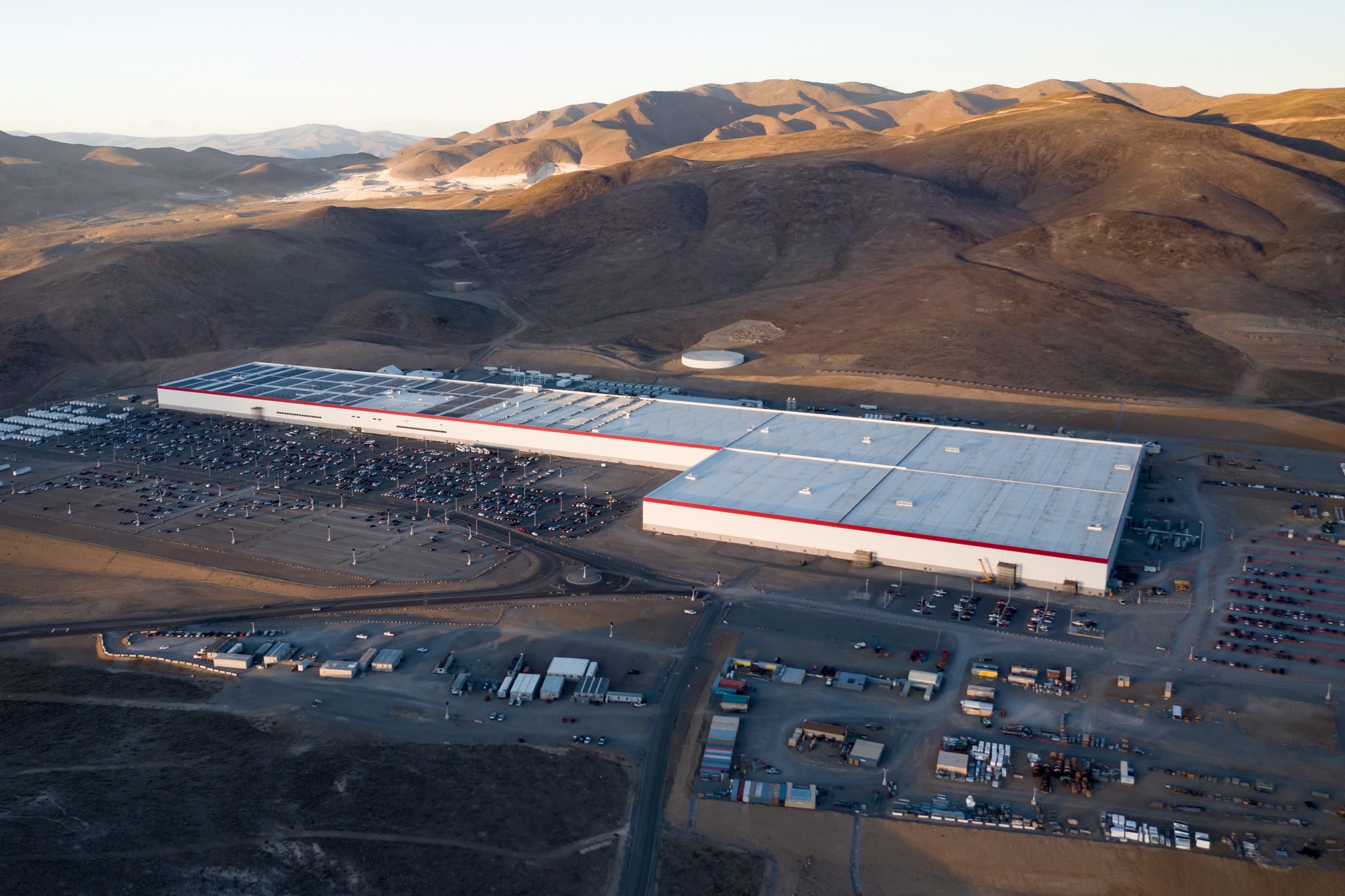
Tesla has revealed in its Extended Impact Report for 2024 that it is using Artificial Intelligence (AI) to enable its factories to be more sustainable. One example it used was its achievement of managing “the majority of the HVAC infrastructure at Gigafactory Nevada is now AI-controlled” last year.
In a commitment to becoming more efficient and making its production as eco-friendly as possible, Tesla has been working for years to find solutions to reduce energy consumption in its factories.
For example, in 2023, Tesla implemented optimization controls in the plastics and paint shops located at Gigafactory Texas, which increased the efficiency of natural gas consumption. Tesla plans to phase out natural gas use across its factories eventually, but for now, it prioritizes work to reduce emissions from that energy source specifically.
It also uses Hygrometric Control Logic for Air Handling Units at Giafactory Berlin, resulting in 17,000 MWh in energy savings each year. At Gigafactory Nevada, Tesla saves 9.5 GWh of energy through the use of N-Methylpyrrolidone refineries when extracting critical raw material.
Perhaps the most interesting way Tesla is conserving energy is through the use of AI at Gigafactory Nevada, as it describes its use of AI to reduce energy demand:
“In 2023, AI Control for HVAC was expanded from Nevada and Texas to now include our Berlin-Brandenburg and Fremont factories. AI Control policy enables HVAC systems within each factory to work together to process sensor data, model factory dynamics, and apply control actions that safely minimize the energy required to support production. In 2024, this system achieved two milestones: the majority of HVAC infrastructure at Gigafactory Nevada is now AI-controlled, reducing fan and thermal energy demand; and the AI algorithm was extended to manage entire chiller plants, creating a closed-loop control system that optimizes both chilled water consumption and the energy required for its generation, all while maintaining factory conditions.”
Tesla utilizes AI Control “primarily on systems that heat or cool critical factory production spaces and equipment.” AI Control communicates with the preexisting standard control logic of each system, and any issues can be resolved by quickly reverting back to standard control. There were none in 2024.
Tesla says that it is utilizing AI to drive impact at its factories, and it has proven to be a valuable tool in reducing energy consumption at one of its facilities.
Elon Musk
Tesla analysts believe Musk and Trump feud will pass
Tesla CEO Elon Musk and U.S. President Donald Trump’s feud shall pass, several bulls say.
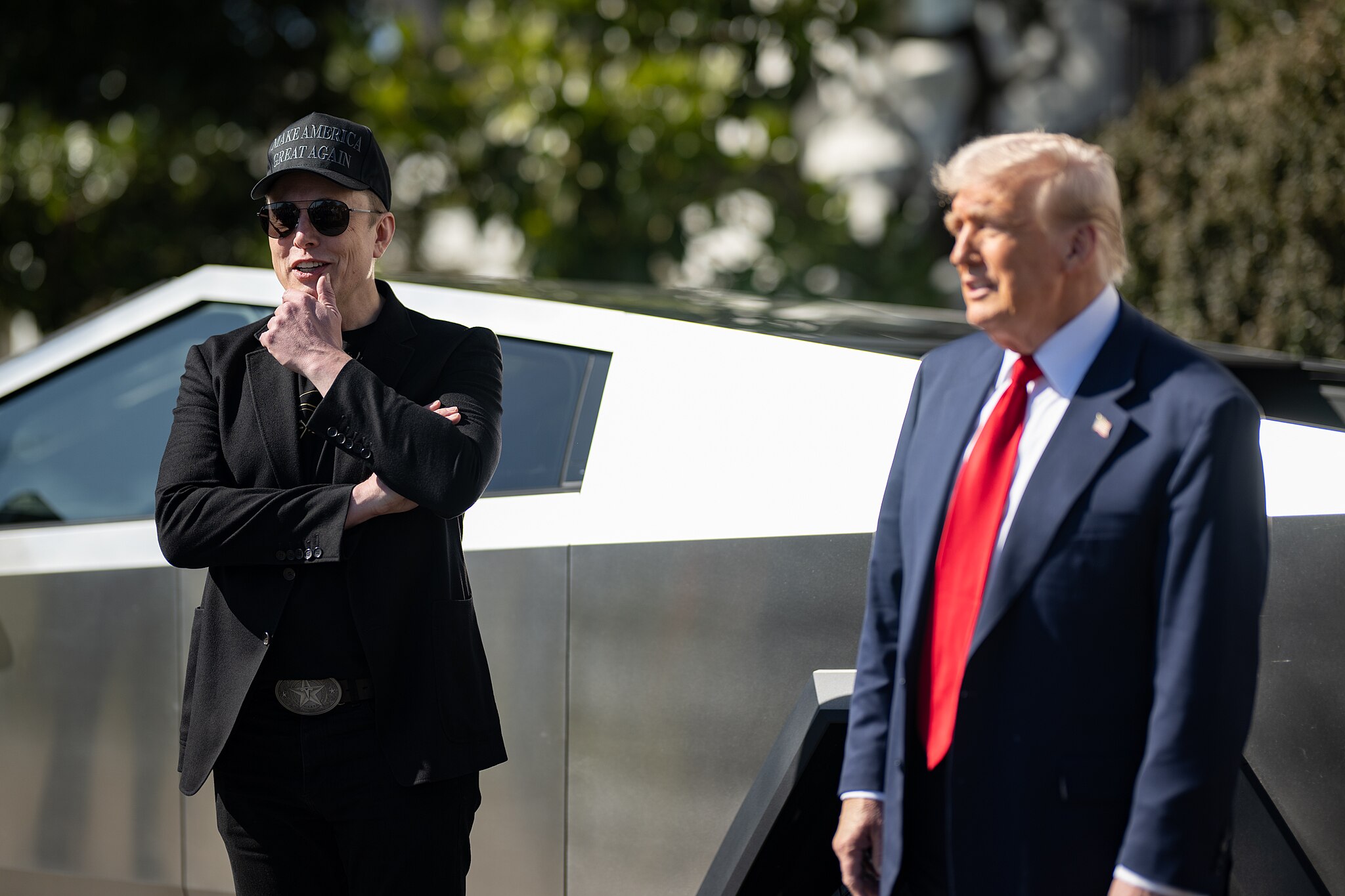
Tesla analysts are breaking down the current feud between CEO Elon Musk and U.S. President Donald Trump, as the two continue to disagree on the “Big Beautiful Bill” and its impact on the country’s national debt.
Musk, who headed the Department of Government Efficiency (DOGE) under the Trump Administration, left his post in May. Soon thereafter, he and President Trump entered a very public and verbal disagreement, where things turned sour. They reconciled to an extent, and things seemed to be in the past.
However, the second disagreement between the two started on Monday, as Musk continued to push back on the “Big Beautiful Bill” that the Trump administration is attempting to sign into law. It would, by Musk’s estimation, increase spending and reverse the work DOGE did to trim the deficit.
Every member of Congress who campaigned on reducing government spending and then immediately voted for the biggest debt increase in history should hang their head in shame!
And they will lose their primary next year if it is the last thing I do on this Earth.
— Elon Musk (@elonmusk) June 30, 2025
President Trump has hinted that DOGE could be “the monster” that “eats Elon,” threatening to end the subsidies that SpaceX and Tesla receive. Musk has not been opposed to ending government subsidies for companies, including his own, as long as they are all abolished.
How Tesla could benefit from the ‘Big Beautiful Bill’ that axes EV subsidies
Despite this contentious back-and-forth between the two, analysts are sharing their opinions now, and a few of the more bullish Tesla observers are convinced that this feud will pass, Trump and Musk will resolve their differences as they have before, and things will return to normal.
ARK Invest’s Cathie Wood said this morning that the feud between Musk and Trump is another example of “this too shall pass:”
BREAKING: CATHIE WOOD SAYS — ELON AND TRUMP FEUD “WILL PASS” 👀 $TSLA
She remains bullish ! pic.twitter.com/w5rW2gfCkx
— TheSonOfWalkley (@TheSonOfWalkley) July 1, 2025
Additionally, Wedbush’s Dan Ives, in a note to investors this morning, said that the situation “will settle:”
“We believe this situation will settle and at the end of the day Musk needs Trump and Trump needs Musk given the AI Arms Race going on between the US and China. The jabs between Musk and Trump will continue as the Budget rolls through Congress but Tesla investors want Musk to focus on driving Tesla and stop this political angle…which has turned into a life of its own in a roller coaster ride since the November elections.”
Tesla shares are down about 5 percent at 3:10 p.m. on the East Coast.
Elon Musk
Tesla scrambles after Musk sidekick exit, CEO takes over sales
Tesla CEO Elon Musk is reportedly overseeing sales in North America and Europe, Bloomberg reports.

Tesla scrambled its executives around following the exit of CEO Elon Musk’s sidekick last week, Omead Afshar. Afshar was relieved of his duties as Head of Sales for both North America and Europe.
Bloomberg is reporting that Musk is now overseeing both regions for sales, according to sources familiar with the matter. Afshar left the company last week, likely due to slow sales in both markets, ending a seven-year term with the electric automaker.
Tesla’s Omead Afshar, known as Elon Musk’s right-hand man, leaves company: reports
Afshar was promoted to the role late last year as Musk was becoming more involved in the road to the White House with President Donald Trump.
Afshar, whose LinkedIn account stated he was working within the “Office of the CEO,” was known as Musk’s right-hand man for years.
Additionally, Tom Zhu, currently the Senior Vice President of Automotive at Tesla, will oversee sales in Asia, according to the report.
It is a scramble by Tesla to get the company’s proven executives over the pain points the automaker has found halfway through the year. Sales are looking to be close to the 1.8 million vehicles the company delivered in both of the past two years.
Tesla is pivoting to pay more attention to the struggling automotive sales that it has felt over the past six months. Although it is still performing well and is the best-selling EV maker by a long way, it is struggling to find growth despite redesigning its vehicles and launching new tech and improvements within them.
The company is also looking to focus more on its deployment of autonomous tech, especially as it recently launched its Robotaxi platform in Austin just over a week ago.
However, while this is the long-term catalyst for Tesla, sales still need some work, and it appears the company’s strategy is to put its biggest guns on its biggest problems.
-

 Elon Musk1 day ago
Elon Musk1 day agoTesla investors will be shocked by Jim Cramer’s latest assessment
-

 News6 days ago
News6 days agoTesla Robotaxi’s biggest challenge seems to be this one thing
-

 News2 weeks ago
News2 weeks agoTesla’s Grok integration will be more realistic with this cool feature
-

 Elon Musk2 weeks ago
Elon Musk2 weeks agoElon Musk slams Bloomberg’s shocking xAI cash burn claims
-

 News2 weeks ago
News2 weeks agoTesla China roars back with highest vehicle registrations this Q2 so far
-

 News2 weeks ago
News2 weeks agoTexas lawmakers urge Tesla to delay Austin robotaxi launch to September
-

 News2 weeks ago
News2 weeks agoTesla dominates Cars.com’s Made in America Index with clean sweep
-

 Elon Musk1 week ago
Elon Musk1 week agoFirst Look at Tesla’s Robotaxi App: features, design, and more




















